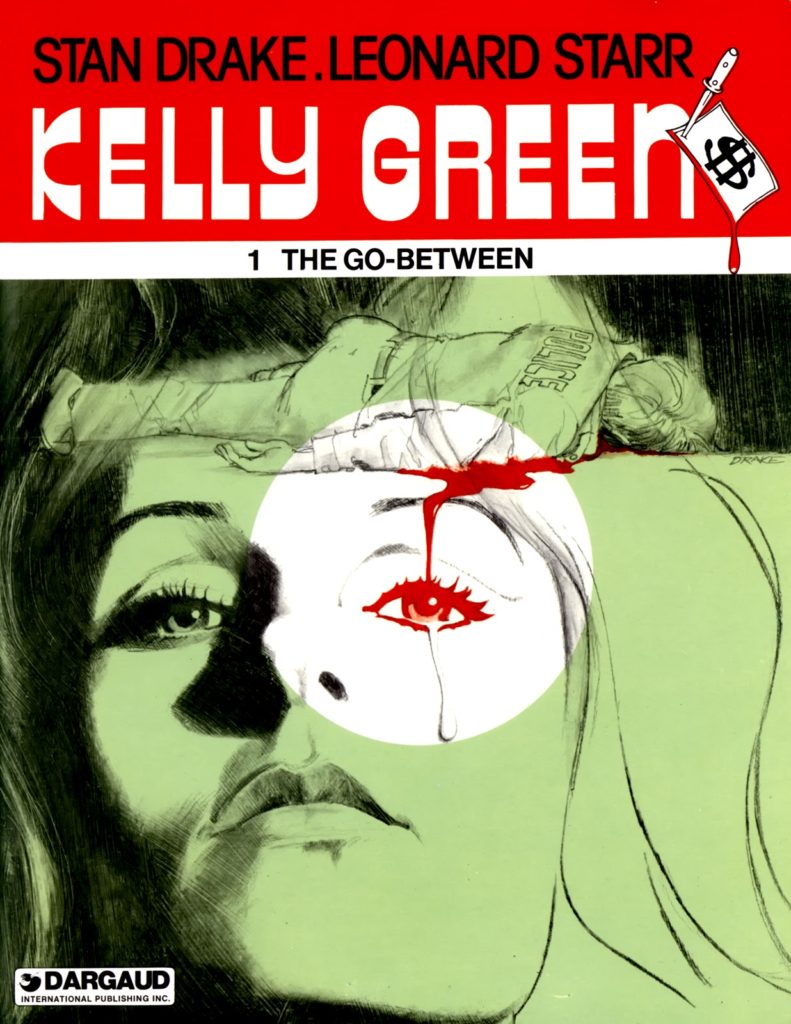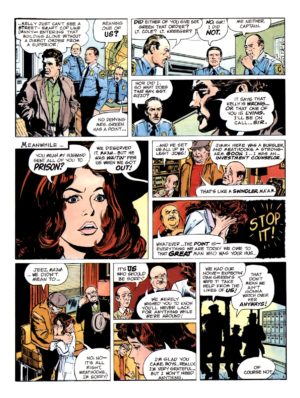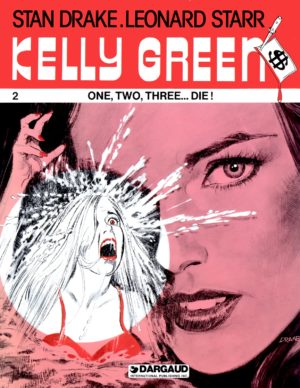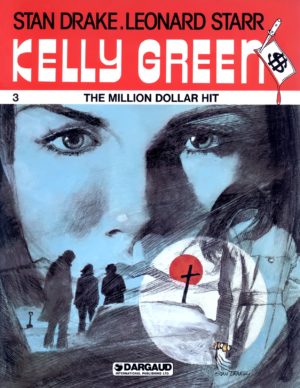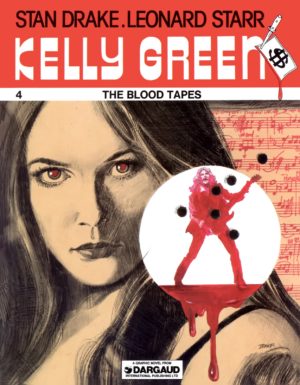Review by Ian Keogh
In the early 1980s Dargaud, renowned French publisher of graphic novels made a brief stab at the American market, issuing English editions of perennial European favourites like Iznogoud and Lucky Luke. Alongside them came four volumes commissioned from two big names in the world of American newspaper strips, both industry veterans. Stan Drake’s smooth graphic style had delivered romance strip The Heart of Juliet Jones for 25 years, while Leonard Starr was producing Little Orphan Annie when he created Kelly Green.
Kelly is widowed, her cop husband gunned down by gangsters, so when the opportunity comes to be a go-between delivering a ransom, she could do with the money. A background mystery concerns whether crooked cops set her husband up. The Go-Between has a serviceable plot, but suffers from Starr writing as if he’s producing a newspaper strip where movement has to be fast on a daily basis in short sequences. While it’s certainly rapidly paced, plotting in three our four panel scenes leaves little time for emotional subtlety. On being informed of her husband’s death Kelly has to move the story on, so stoically acknowledges the news before a rant about the crooked cops in his department. It’s staged rather than real, and while Starr’s newspaper strip method of writing continues over subsequent books, it’s modified more to the demands of comics. Another misjudgement is the introduction of some comedy relief, three crooks who were shown the error of their ways by Dan Green, and feel the time is right to introduce themselves to his widow. Again, their presence has greater validation later in the series.
It takes until halfway through before the plot starts convincing, yet Drake’s art manages that from the start. Considering his long years in the romance strip trade, it’s taken for granted that Kelly is as glamorous as intended, with some beautiful illustrations along the way, but Drake ensures everyone involved is recognisable, with Dan’s former cop partner very distinctive. So, unfortunately are the exaggerated poses of a gay club owner. It wasn’t subtle in 1982, and is now offensive. Attention is paid to locations and atmosphere, and the way Drake varies the viewpoints for the talking scenes is textbook for aspiring comic artists.
Once past the introductions, Starr’s story improves. Suspense is generated by Kelly perhaps not being entirely able to cope with what she’s getting herself into, and hanging above that is the question of who sold out her husband. His partner is perhaps over-protective, but well intentioned in giving Kelly self-defence tips, and Starr throws in viable extra complications, one leading to a neatly structured scene in a motel room where audience attention is drawn to something Kelly has missed. By the final few pages Starr will have you hooked, and he’s come up with a culprit and motive that works well, tying everything together nicely.
It’s been a bumpy beginning, but the creators come through, and Kelly’s life continues in One, Two, Three… Die!
